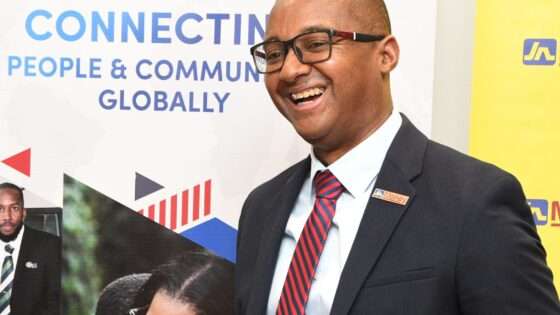on
BY SIMONE J. SMITH
The world, as we know it, is teetering on the precipice of change. While our attention is diverted by the glitz and glamour of celebrity culture, the heated debates of political campaigns, and the harrowing realities of global conflict, a silent revolution is brewing.
Behind the scenes, unseen hands are crafting the blueprints for our future, a future that will irrevocably alter the course of human existence. These plans, shrouded in secrecy, promise to reshape our societies, our economies, and even our very identities. As we remain captivated by the distractions of the day, the architects of this new world order are laying the foundation for a reality beyond our current comprehension.
There is a new initiative from the WHO that is deeply concerning. World leaders appear to be seeking domain over plants, animals, and humans — globalized, central control over public health policies in all participating countries.
The U.S., Canada and Mexico last week launched a joint pandemic preparedness initiative that one critic warned could empower the WHO to impose global control measures like vaccine passports and policies targeting the “infodemic.”
Are Vaccine Passports Just Around the Corner?
On October 23rd, 2024 following through on the commitments made at the 2021 and 2023 North American Leaders’ Summits (NALS), the U.S. Department of Health and Human Services (HHS), in collaboration with the U.S. Departments of State (State), Agriculture (USDA), and Homeland Security (DHS), and their respective counterparts in Mexico and Canada, released the North American Preparedness for Animal and Human Pandemics Initiative (NAPAHPI) to continue strengthening regional health security and pandemic preparedness through a One Health approach.
NAPAHPI is being touted as a flexible, scalable, and cross-sectoral platform to strengthen regional capacities for: prevention, preparedness, and response to a broad range of health security threats that builds on lessons learned from COVID-19, and other health security events in the last decade. It is based on a long-standing trilateral collaboration under the 2007 North American Plan for Avian and Pandemic Influenza and the 2012 North American Plan for Animal and Pandemic Influenza.
The 2007 North American Plan for Avian and Pandemic Influenza resulted from the commitment made by the leaders of the three countries under the Security and Prosperity Partnership of North America (SPP). The plan included a comprehensive approach to prepare for avian and pandemic influenza in North America based on the assumption that a pandemic was likely to start outside of the region and focused on avian influenza because of the re-emergence of highly pathogenic avian influenza H5N1 virus in humans in 2003.
The North American Plan for Animal and Pandemic Influenza (NAPAPI), launched by President Barack Obama, President Felipe Calderon of Mexico, and Prime Minister Stephen Harper of Canada at the North American Leaders Summit (NALS) in April 2012, provides a comprehensive, regional and cross-sectoral, health security framework. The framework outlines how Canada, Mexico, and the United States intend to strengthen our emergency response capacities, as well as our trilateral collaborations and capabilities to assist each other and ensure a quick and coordinated response to outbreaks of animal influenza or an influenza pandemic.
This new initiative establishes a Senior Coordinating Body as a key decision-making forum and the North American Health Security Working Group as its technical arm with members from the human health, animal health/agriculture, homeland security, and foreign affairs sectors. The three countries (Canada, Mexico, and the U.S.) intend to collaborate to strengthen regional health security through a focus on priority issues:
- Animal Diseases with Zoonotic Potential
- Infectious Diseases with Pandemic Potential and Other Threats to Regional Health Security
- Epidemiological Surveillance and Laboratory Diagnostics
- Medical Countermeasures
- Public Health Measures
- Medical Supply Chains
- Health Systems
- Risk Communications
- Border Health Measures
- Critical Infrastructure
- Risk Assessment and Foresight Risk Analysis
- Joint Exercises and Training
- Sustainable Financing
I want to point out some of the dangers of this; the Senior Coordinating Body (SCB) as a central decision-making forum poses significant risks. This centralized structure concentrates power in the hands of a few, potentially leading to groupthink and a lack of diverse perspectives. When I say diverse perspectives, I am speaking about the voices of the global community.
Now, let’s talk about One Health. ‘One Health’ is reportedly an integrated, unifying approach to balance and optimize the health of: people, animals, and the environment. They say it is particularly important to: prevent, predict, detect, and respond to global health threats such as the COVID-19 pandemic.
The One Health High-Level Expert Panel (OHHLEP) was formed in May 2021 to advise FAO, UNEP, WHO and WOAH on One Health issues. This includes recommendations for research on emerging disease threats, and the development of a long-term global plan of action to avert outbreaks of diseases like: H5N1 avian influenza, MERS, Ebola, Zika, and possibly COVID-19. The One Health High-Level Expert Panel is the scientific and strategic advisory group to the Quadripartite organizations: the Food and Agriculture Organization of the United Nations (FAO), the United Nations Environment Programme (UNEP), the World Health Organization (WHO) and the World Organization for Animal Health (WOAH) – in their collaboration on One Health.
The panel will also have a role in investigating the impact of human activity on the environment and wildlife habitats, and how this drives disease threats. Critical areas include food production and distribution, urbanization and infrastructure development, international travel and trade, activities that lead to biodiversity loss and climate change, and those that put increased pressure on the natural resource base – all of which can lead to the emergence of zoonotic diseases.
It appears that since the COVID-19 pandemic began, the necessary constructs have been created to facilitate vaccine passports. Now, it seems that they will be able to quickly enact these measures for the ‘next pandemic’ using the same systems. It has also been reported that the new initiative will adopt “a more systematic approach” to tackle the “infodemic” — referring to purported “misinformation” and “disinformation” on health-related topics.
The WHO defines the “infodemic” as “too much information including false or misleading information in digital and physical environments during a disease outbreak.” According to the WHO, the infodemic “causes confusion and risk-taking behaviours that can harm health” and foster “mistrust in health authorities.”
What does this mean? Well, this means our collaborating world leaders will try to ‘pre bunk misinformation. It appears that part of the plan is to abolish free speech to protect public health.
I want to end this with one question community; are partner agencies too corrupt to be trusted? We trusted them during the pandemic, and there are some of us who are starting to see that we should not have done that. Let me know your thoughts.
REFERENCES:
https://www.publicsafety.gc.ca/cnt/rsrcs/pblctns/nml-pndmc-nflnz/index-en.aspx#fn01
https://www.who.int/health-topics/infodemic#tab=tab_1
https://www.hhs.gov/about/agencies/oga/global-health-security/index.html
https://www.who.int/groups/one-health-high-level-expert-panel
https://www.who.int/news-room/questions-and-answers/item/one-health
‘P’ for Public or Propaganda? How NPR Morphed Into a Voice for the ‘Elite Establishment’
Stay in the loop with exclusive news, stories, and insights—delivered straight to your inbox. No fluff, just real content that matters. Sign up today!
We, as humans are guaranteed certain things in life: stressors, taxes, bills and death are the first thoughts that pop to mind. It is not uncommon that many people find a hard time dealing with these daily life stressors, and at times will find themselves losing control over their lives. Simone Jennifer Smith’s great passion is using the gifts that have been given to her, to help educate her clients on how to live meaningful lives. The Hear to Help Team consists of powerfully motivated individuals, who like Simone, see that there is a need in this world; a need for real connection. As the founder and Director of Hear 2 Help, Simone leads a team that goes out into the community day to day, servicing families with their educational, legal and mental health needs.Her dedication shows in her Toronto Caribbean newspaper articles, and in her role as a host on the TCN TV Network.













